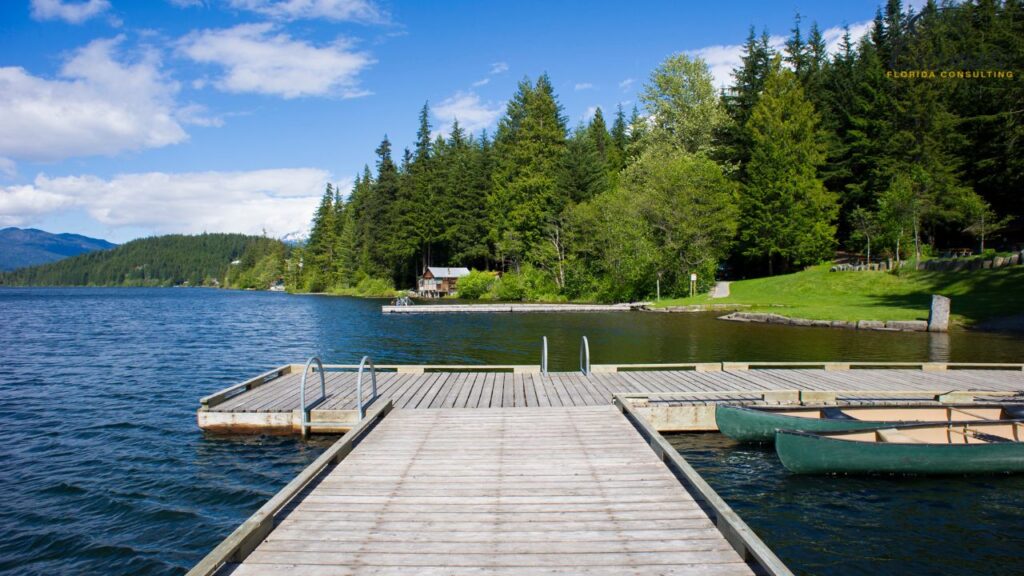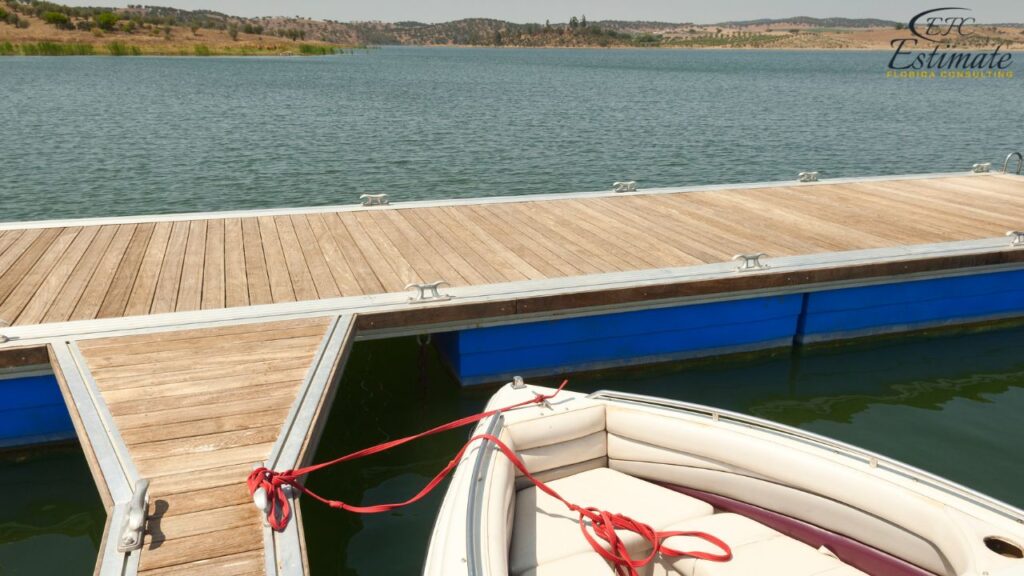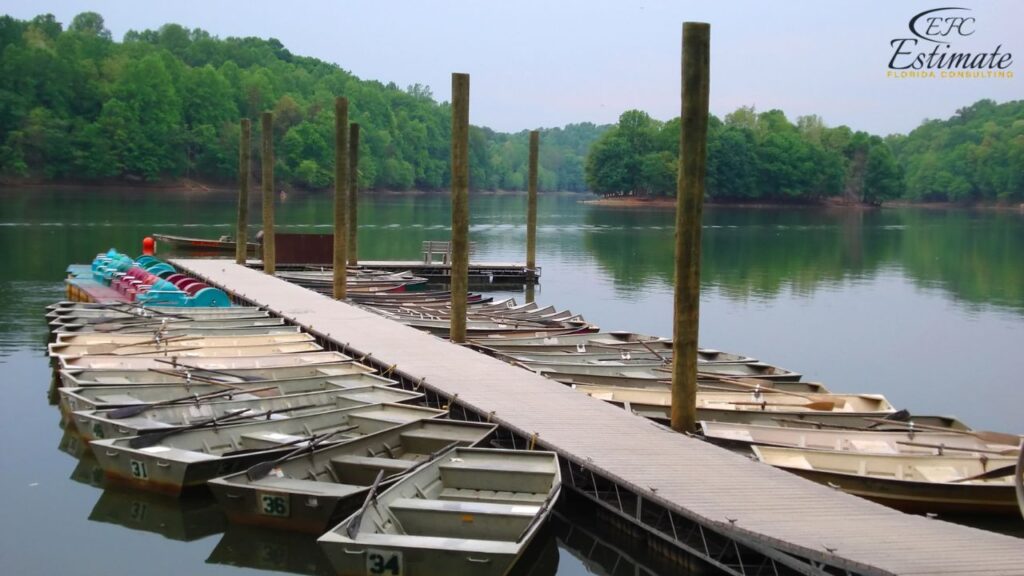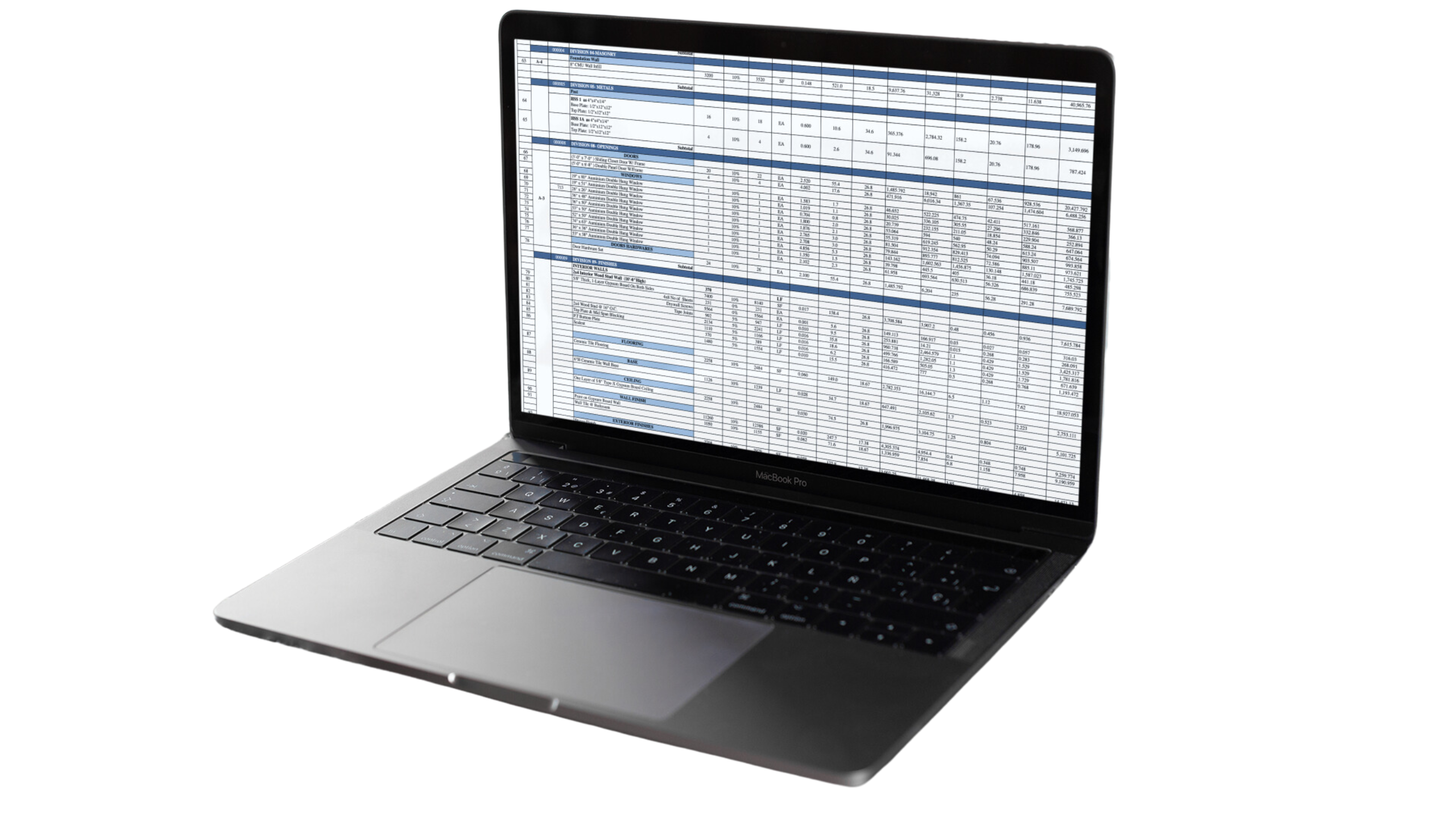How do you build a floating dock with a PVC pipe?
Building a floating dock can be a rewarding project that provides a convenient and enjoyable way to access the water. Using PVC pipes to construct your floating dock is an excellent choice due to their durability, resistance to corrosion, and ease of use. This guide will walk you through the steps to build a sturdy and functional floating dock using PVC pipes, covering everything from planning and materials to assembly and finishing touches. A well-constructed floating dock can enhance your waterfront property, providing a safe and stable platform for boating, fishing, or relaxing by the water. By using PVC pipes, you also ensure that the dock remains lightweight yet strong, withstanding the harsh conditions of a marine environment.

Materials and Tools Needed
Before starting your project, gather all the necessary materials and tools. Having everything on hand will make the process smoother and more efficient. Proper preparation also ensures that you won’t face unnecessary delays due to missing components or inadequate tools. This section will help you compile a comprehensive list of what you need, ensuring that the construction process is seamless and enjoyable.
Materials
Item | Quantity | Cost per Unit | Total Cost |
PVC pipes (8-inch, schedule 40) | 4 | $75 | $300 |
PVC pipe fittings (elbows, tees, couplings) | 20 | $4.50 | $90 |
PVC glue and primer | 2 cans | $22.50 | $45 |
Pressure-treated lumber (for frame and decking) | 20 boards | $37.50 | $750 |
Stainless steel screws and bolts | 5 packs | $30 | $150 |
Plastic barrels or foam billets | 8 | $60 | $480 |
Galvanized steel brackets | 10 | $7.50 | $75 |
Marine-grade rope or nylon straps | 4 rolls | $15 | $60 |
Tools
Tool | Quantity | Cost per Unit | Total Cost |
Measuring tape | 1 | $15 | $15 |
PVC pipe cutter or saw | 1 | $37.50 | $37.50 |
Power drill with bits | 1 | $75 | $75 |
Screwdriver | 1 | $15 | $15 |
Adjustable wrench | 1 | $22.50 | $22.50 |
Level | 1 | $30 | $30 |
Safety goggles and gloves | 1 set | $22.50 | $22.50 |
Step-by-Step Instructions
Step 1: Planning and Design
Start by planning the size and design of your floating dock. Determine the dimensions based on your needs and the available space. Common sizes for floating docks range from 8×8 feet to 12×16 feet. Ensure the design includes adequate buoyancy to support the weight of the dock and its users. Consider factors such as the depth of the water, the typical load the dock will bear, and the local weather conditions. A well-thought-out plan will make the construction process more straightforward and help avoid common pitfalls.

Tip: Sketch your design on paper, including the layout of the PVC pipes and the frame structure. This will help you visualize the project and identify any potential issues before construction begins. Additionally, creating a detailed materials list based on your design will ensure you purchase the correct quantities of each component, reducing waste and saving money.
Planning and Design Costs | Cost per Unit | Total Cost |
Sketching materials | $7.50 | $7.50 |
Detailed materials list | $15 | $15 |
Planning software (optional) | $45 | $45 |
Step 2: Preparing the PVC Pipes
Cut the PVC pipes to the required lengths using a PVC pipe cutter or saw. The length of the pipes will depend on the size of your dock. For an 8×8-foot dock, you might need four 8-foot PVC pipes for the main supports and shorter sections for cross-bracing. Properly prepared pipes will ensure a stable and durable structure.
- Cutting Pipes: Measure and mark the pipes accurately before cutting. Ensure clean, straight cuts for a proper fit. Double-check your measurements to avoid wasting materials and ensure that all pieces fit together seamlessly.

- Assembling Sections: Dry-fit the pipes and fittings to check the layout and make adjustments as needed. Use PVC glue and primer to secure the joints once you are satisfied with the fit. Allow the glue to cure fully to ensure a strong bond. This step is crucial for the integrity and longevity of your dock.
Preparing PVC Pipes Costs | Cost per Unit | Total Cost |
PVC pipe cutter or saw | $37.50 | $37.50 |
PVC glue and primer | $22.50 | $45 |
Measuring tape | $15 | $15 |
Get 5 New Leads Next 7Days With Our System
- Multi-Family Building
- Hotel Building
- Hospital Building
- Warehouse Building
- High-Rise Building
- Shopping Complex
Step 3: Constructing the Frame
Construct the frame of the dock using pressure-treated lumber. The frame will provide structural support and serve as the base for attaching the PVC pipes and decking. A well-built frame is essential for the stability and functionality of the dock.
- Building the Frame: Assemble the frame on a flat surface. Use galvanized steel brackets to reinforce the corners and joints. Ensure the frame is square and level. Accurate assembly of the frame will prevent future issues with stability and alignment.
- Attaching PVC Pipes: Attach the PVC pipes to the frame using stainless steel screws and brackets. Space the pipes evenly to distribute the weight and provide stability. Ensure that the pipes are securely fastened to prevent movement and maintain the structural integrity of the dock.
Constructing the Frame Costs | Cost per Unit | Total Cost |
Pressure-treated lumber | $37.50 | $750 |
Galvanized steel brackets | $7.50 | $75 |
Stainless steel screws and bolts | $30 | $150 |
Step 4: Adding Buoyancy
Attach plastic barrels or foam billets to the underside of the frame to provide buoyancy. Secure the barrels or billets with marine-grade rope or nylon straps, ensuring they are evenly distributed and securely fastened. Proper buoyancy is essential for keeping the dock stable and level in the water.
- Securing Barrels: Place the barrels at each corner and along the sides of the frame. Tighten the straps to prevent the barrels from shifting. Properly secured barrels will ensure that the dock remains stable and can support the intended load.
- Ensuring Stability: Check the buoyancy by placing the frame in the water. Make adjustments as needed to ensure the dock sits level and stable. Testing the buoyancy before completing the construction will help you identify and correct any issues early on.
Adding Buoyancy Costs | Cost per Unit | Total Cost |
Plastic barrels | $60 | $480 |
Marine-grade rope | $15 | $60 |
Step 5: Installing the Decking
Install the pressure-treated lumber decking on top of the frame. Use stainless steel screws to attach the decking boards to the frame, ensuring a secure and stable surface. A well-installed deck will provide a comfortable and safe surface for users.
- Laying Decking Boards: Start at one end and work your way across, leaving a small gap between boards for drainage and expansion. Proper spacing will prevent water from pooling on the deck and allow for natural expansion and contraction of the wood.

- Securing Boards: Use a power drill and stainless steel screws to attach each board to the frame. Ensure all boards are flush and evenly spaced. Securing the boards properly will prevent movement and maintain the integrity of the deck.
Installing Decking Costs | Cost per Unit | Total Cost |
Pressure-treated lumber | $37.50 | $750 |
Stainless steel screws | $30 | $150 |
Step 6: Finishing Touches
Add any finishing touches to enhance the functionality and appearance of your floating dock. These details can improve the usability and aesthetics of the dock, making it more enjoyable for users.
- Handrails: Install handrails along the edges of the dock for safety. Handrails provide support and prevent accidents, especially for children and elderly users.
- Cleats and Bumpers: Attach cleats and bumpers to secure boats and protect the dock from damage. Cleats provide a secure point for tying up boats, while bumpers protect both the dock and boats from impact damage.
- Ladder: Install a ladder for easy access to and from the water. A ladder makes it easier to get in and out of the water, enhancing the overall functionality of the dock.
Finishing Touches Costs | Cost per Unit | Total Cost |
Handrails | $75 | $300 |
Cleats and bumpers | $37.50 | $150 |
Ladder | $112.50 | $112.50 |
Maintenance Tips
Regular maintenance will extend the life of your floating dock and ensure it remains safe and functional. Proper maintenance will also help you identify and address issues before they become major problems.
- Inspect Regularly: Check for loose screws, damaged boards, and signs of wear. Make repairs as needed. Regular inspections will help you catch and address issues early, preventing more extensive damage.
- Clean Periodically: Remove debris and algae buildup from the dock and buoyancy devices. Cleaning the dock regularly will maintain its appearance and prevent slippery surfaces.
- Winter Storage: If you live in a region with harsh winters, consider removing the dock from the water or securing it to prevent ice damage. Proper winter storage will protect the dock from damage caused by freezing temperatures and ice movement.
Download Template For Dock Project Breakdown
- Materials list updated to the zip code
- Fast delivery
- Data base of general contractors and sub-contractors
- Local estimators

Conclusion
Building a floating dock with PVC pipes is a practical and rewarding project that can enhance your waterfront experience. By following these step-by-step instructions, you can create a durable and functional dock that will provide years of enjoyment. Remember to prioritize safety throughout the construction process and perform regular maintenance to keep your dock in top condition. With careful planning and execution, your floating dock will be a valuable addition to your property, providing a stable and convenient platform for various water activities.
FAQs
You will need PVC pipes (8-inch, schedule 40), PVC pipe fittings (elbows, tees, couplings), PVC glue and primer, pressure-treated lumber, stainless steel screws and bolts, plastic barrels or foam billets, galvanized steel brackets, and marine-grade rope or nylon straps. Additionally, you will need tools like a measuring tape, PVC pipe cutter or saw, power drill, screwdriver, adjustable wrench, level, and safety goggles and gloves.
cost can vary, but here’s an estimated breakdown:
- Materials:
- PVC pipes (4 x $75): $300
- PVC pipe fittings (20 x $4.50): $90
- PVC glue and primer (2 cans x $22.50): $45
- Pressure-treated lumber (20 boards x $37.50): $750
- Stainless steel screws and bolts (5 packs x $30): $150
- Plastic barrels (8 x $60): $480
- Galvanized steel brackets (10 x $7.50): $75
- Marine-grade rope (4 rolls x $15): $60
- Tools:
- Measuring tape: $15
- PVC pipe cutter or saw: $37.50
- Power drill with bits: $75
- Screwdriver: $15
- Adjustable wrench: $22.50
- Level: $30
- Safety goggles and gloves: $22.50
Start by determining the dimensions based on your needs and available space. Common sizes range from 8×8 feet to 12×16 feet. Sketch your design on paper, including the layout of the PVC pipes and frame structure. This helps visualize the project and identify potential issues. Ensure the design includes adequate buoyancy to support the dock and its users.
Cut the PVC pipes to the required lengths using a PVC pipe cutter or saw. Dry-fit the pipes and fittings to check the layout. Use PVC glue and primer to secure the joints once satisfied with the fit. Ensure clean, straight cuts for a proper fit, and double-check measurements to avoid waste.
Assemble the frame using pressure-treated lumber on a flat surface, reinforced with galvanized steel brackets at the corners and joints. Ensure the frame is square and level. Attach the PVC pipes to the frame with stainless steel screws and brackets, spaced evenly for stability.
Attach plastic barrels or foam billets to the underside of the frame, securing them with marine-grade rope or nylon straps. Ensure they are evenly distributed and securely fastened to keep the dock stable and level in the water. Test the buoyancy by placing the frame in the water and make adjustments as needed.
Install pressure-treated lumber decking on top of the frame. Use stainless steel screws to attach the decking boards, starting at one end and working across, leaving a small gap between boards for drainage and expansion. Ensure all boards are flush and evenly spaced.
Add handrails for safety, cleats and bumpers for securing boats and protecting the dock, and a ladder for easy water access. These additions enhance the functionality and appearance of the dock.
egularly inspect for loose screws, damaged boards, and signs of wear. Clean debris and algae buildup periodically. In harsh winter regions, remove the dock from the water or secure it to prevent ice damage. Regular maintenance will extend the dock’s life and ensure safety and functionality.
PVC pipes are durable, resistant to corrosion, lightweight yet strong, and can withstand harsh marine environments. They are also easy to work with, making the construction process simpler and more efficient.
Google Reviews



Process To Get Build A Floating Dock With a PVC Pipe Estimate Report
Here I am going to share some steps to get your build a floating dock with a pvc pipe estimate report.
-
You need to send your plan to us.
You can send us your plan on info@estimatorflorida.com
-
You receive a quote for your project.
Before starting your project, we send you a quote for your service. That quote will have detailed information about your project. Here you will get information about the size, difficulty, complexity and bid date when determining pricing.
-
Get Estimate Report
Our team will takeoff and estimate your project. When we deliver you’ll receive a PDF and an Excel file of your estimate. We can also offer construction lead generation services for the jobs you’d like to pursue further.

